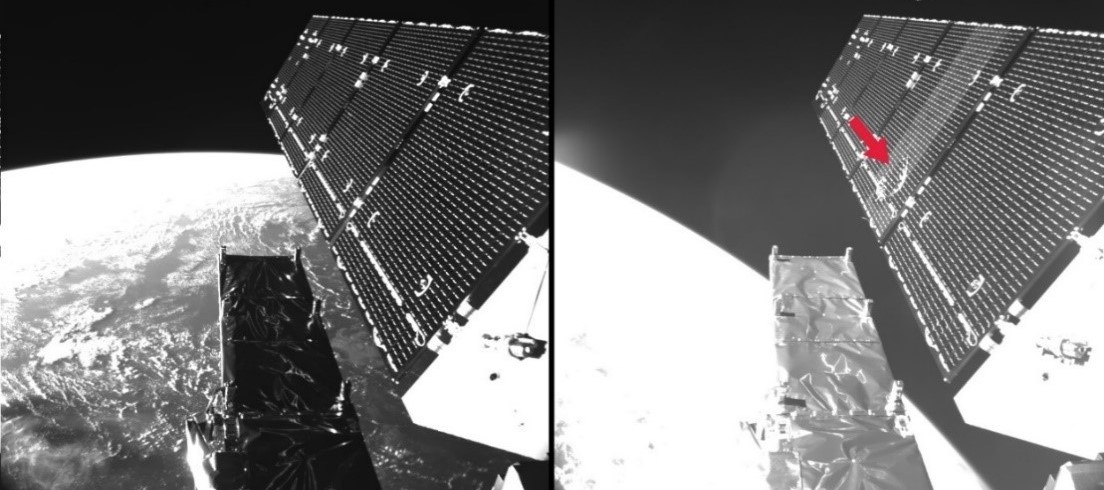Sentinel-1a Monitoring Camera System
Micro-cameras & Space Exploration has developed a Monitoring Camera System for the European radar imaging satellite Sentinel-1A of the European Space Agency’s Copernicus programme

Launch: 3 April 2014
Orbit: Polar, Sun-synchronous at 693 km
Satellite: 2.8 x 2.5 x 4 m3
Objective: Monitoring sea ice, oil spills, marine winds & waves, land-use change, land deformation
Main instrument: Synthetic Aperture Radar (SAR)
Solar panels: 10 m
Radar antenna: 12 m
Project: Monitoring Camera System
Customer: Thales Alenia Space / ESA
Objective:
- monitoring the deployment of solar panels and SAR antenna during LEOP
- Earth viewing
The system is composed of:
- 2 micro-cameras for solar panels and SAR antenna deployment monitoring and 1 micro-camera for Earth viewing
- Control & processing unit for dedicated operations during deployments and interface to the spacecraft
The micro-cameras have a 70° field-of-view, for a mass of 110 g and a power consumption of 1.8 W
They are developed to sustain the extreme deep space environment

Space debris impact on solar panel detected
Images taken by MCSE camera on Sentinel-1A after launch in April 2014 (left) and in August 2016 showing an impact on the solar panel (right). Credit ESA
Related paper highlights
- Orbital debris has been identified as a root cause of a Sentinel-1A anomaly
- The damage location was determined by an on-board camera
- This allowed to reconstruct the impulse vector of the impactor
- Several trackable fragments have been released
- On-board cameras are recommended for failure analysis






